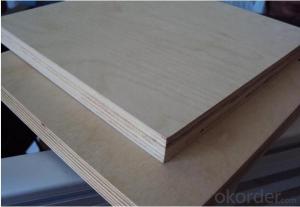Stained Plywood: A Journey Through Color and Character
There’s something about stained plywood that captures the essence of creativity and warmth. It’s not just a material, but a canvas for expression, a medium that breathes life into spaces. Whether you’re a DIY enthusiast, a professional designer, or simply someone looking to add a touch of personality to your home, stained plywood is a versatile and enchanting option.
The Allure of Plywood
Plywood, with its layered structure, offers a unique blend of strength and flexibility. It’s a favorite among builders and designers for its ability to take on various forms and functions. But when you add color to the mix, you elevate plywood from a mere construction material to a statement piece.
A Splash of Color, A Touch of Personality
Staining plywood is an art form. It’s about choosing the right hue to complement your space, to reflect your mood, or to tell a story. The process is as much about the color as it is about the character you want to imbue in your surroundings.
The Process: From Raw to Refined
Starting with raw plywood, the journey to a stained masterpiece begins with sanding. This step is crucial for removing any rough edges and preparing the surface for the stain. The choice of sandpaper grit is important; a finer grit will yield a smoother finish.
Once the surface is smooth, it’s time to choose your stain. There are countless options, from transparent to solid colors, each with its own depth and richness. The type of wood and the desired effect will guide your selection.
Applying the stain is a delicate dance of patience and precision. You’ll want to work in sections, ensuring even coverage and avoiding drips. The key is to let the stain soak in, then wipe off the excess, revealing the true depth of color.
The Palette: Exploring Color Options
The world of stains is as vast as your imagination. From the warm embrace of walnut to the cool sophistication of gray, the possibilities are endless. You can go bold with a deep red mahogany or opt for a subtle, natural look with a light oak.
Experimenting with different colors can lead to unexpected delights. For instance, staining plywood blue can bring a sense of tranquility to a room, while a green hue might evoke a connection with nature. The right color can transform a space, setting the tone for how you feel and interact within it.
Embracing the Imperfections
One of the beauties of stained plywood is its imperfections. The knots and grain patterns in the wood add character and depth to the color. These imperfections are what make each piece unique, a one-of-a-kind work of art.
The Character: Telling a Story
Each piece of plywood has a story to tell. The way the stain interacts with the wood’s natural patterns creates a narrative that’s as unique as a fingerprint. This is where the true charm of stained plywood lies.
Practical Applications: Beyond Aesthetics
Stained plywood is not just a decorative element; it’s also practical. It can be used for furniture, wall coverings, cabinetry, and more. Its durability and resistance to wear make it an excellent choice for high-traffic areas or spaces that require a bit of toughness.
Furniture: A Seat of Style and Comfort
When it comes to furniture, stained plywood can be crafted into chairs, tables, or even beds. The color adds a layer of visual interest, while the material’s strength ensures longevity.
Wall Coverings: A Statement of Taste
For wall coverings, stained plywood can create a feature wall that stands out. It can be arranged in various patterns or used as a backdrop for artwork or shelving.
Cabinetry: Functional and Stylish Storage Solutions
In cabinetry, stained plywood offers a combination of functionality and style. It can be used for kitchen cabinets, bathroom vanities, or built-in storage, adding a touch of elegance to everyday storage solutions.
The DIY Approach: A Labor of Love
For many, the appeal of stained plywood lies in the DIY aspect. There’s a sense of satisfaction in creating something with your own hands, in seeing your vision come to life.
The Tools: What You’ll Need for Success
To embark on a stained plywood project, you’ll need a few essential tools: sandpaper, a stain of your choice, a brush or cloth for application, and protective gear for safety.
The Steps: A Guide to Your Creation
The process involves preparation, application, and finishing. Each step requires attention to detail and a passion for the outcome. The end result is a reflection of your creativity and hard work.
The Final Touch: Finishing with Care
After the stain has dried, the final touch is often a protective finish. This could be a clear coat, a lacquer, or a wax, depending on the desired sheen and protection level.
The Finish: Protecting Your Masterpiece
The right finish not only enhances the color but also protects the plywood from everyday wear and tear. It’s the final step in ensuring your stained plywood piece stands the test of time.
In Conclusion
Stained plywood is more than just a material; it’s a canvas for your creativity, a way to express your individuality, and a means to transform spaces. It’s about the journey from raw wood to a finished piece of art, a journey that’s as rewarding as it is beautiful. So, the next time you’re considering a project, why not let stained plywood add character and color to your world?

